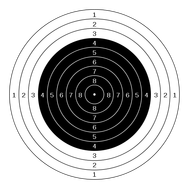Firstly, remember that Spinal Decompression Therapy is all about the practitioner. It's sort of like the fact that all mechanics basically utilize the same tools. The thing that separates a good mechanic from an average (or poor) mechanic is not his tools ----- it is what he does with those tools. It has been both scientifically (and legally) proven that DRX IS NO BETTER (OR WORSE) THAN ANY ONE OF A DOZEN OR SO OTHER BRANDS OF DECOMPRESSION EQUIPMENT, when it comes to effectively decompressing the spine in a non-surgical fashion.
Secondly, I am going to assume something here. Although I could be wrong, my guess is that the "Crushed L1" is an old Compression Fracture and not a crushed disc. Although a fracture of this sort is certainly not a contraindication to treatment (as long as the injury is an old one, and has had ample time to heal), the crushed or "compressed" vertebrae is not going to respond to Spinal Decompression Therapy in any visible sort of way.
Decompression Fractures are like taking a vertebrae and crushing or flattening it like you would a coke can that you stood on end and stomped on. If severe enough, these "Compressions" are actually referred to as "Pancake Vertebrae". Discs, ligaments, and certain other soft tissues have the ability to respond to Spinal Decompression Therapy because they can be stretched (DEGENERATIVE DISCS, DISC HERNIATIONS, or SPINAL STENOSIS). You cannot "stretch" out an old Compression Fracture --- it's a bony problem ---- although Spinal Decompression Therapy may very well help relieve the pain.
Lastly, the scientific research has shown conclusively that it is impossible to decompress a specific disc simply by pushing a button on the unit that changes the angle / height of the pull. Here is what Dr James Edwards of the American Chiropractic Association wrote about this very topic nearly five years ago. Dr. Jay Kennedy, one of the country's foremost experts in Spinal Decompression Therapy for the past two decades has repeatedly said the same thing (in fact, I believe that the highlighted quote below was probably taken from Dr. Kennedy's material). Although DRX practitioners know this all too well (and would never tout this "fact" in a court of law), it continues to be widely propagated by many different companies.
"Angles are pure and exact math. The most differential thing you could ever hope to attach to a decompression table is a human being! As improbable as it sounds, there are still clinicians who believe that a specific angle can reach a specific level in the spine. Again, this is a biomechanical impossibility. For any angle to be accurate, EVERTHING must be consistent, including: exact patient position on the table, spinal height, disc height, ligamentous tension, curvature / lordosis angle, etc.
"In short, no two people are the same and the most we can know about angulation is that (supine) a steep angle will transmit more of the force higher in the spine. How much and how high is speculative at best. The best information comes from a 1968 traction study (Colachis and Strom) and Rene Cailliet, MD ... [the] authors suggest that acute pull angle create less flexion than obtuse angulation. It is hardly $100,000 information, and thus exact degree angles are best suited for a sales pitch not a viable treatment." Dr James Edwards and Dr. Cynthia Vaughn
So, Frank, to answer your question; you will get hooked up to the DRX-9000 and it will pull on ALL of your lumbar discs --- as well as many of your thoracic discs as well. The force will pull where it pulls, and contrary to what anyone might try and convince you of; you cannot change this fact if you wanted to. The good news is that your series of non-surgical Spinal Decompression treatments is quite likely to help you.




 RSS Feed
RSS Feed
